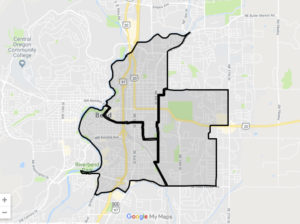Many of our clients who are interested in real estate investment are asking our team for guidance on the benefits of investing in Opportunity Zones. As with many government programs specific to taxes, the Opportunity Zone program may seem complicated initially, but it’s actually a straightforward tax incentive designed to encourage growth in low-income areas while benefiting investors. This relatively new federal program also offers incentives on the state level, and I hope this overview helps you determine whether investing in an Opportunity Zone is right for you.
What is an Opportunity Zone?

Essentially, an Opportunity Zone is a tract of land that meets certain criteria based on census information, and identified by the government as a low-income area that would benefit from providing tax relief to investors while stimulating positive growth within that designated zone.
In Bend, there are three Opportunity Zones (out of the 86 qualified Opportunity Zones in Oregon), and they are located in the Old Mill District, Central Business District and east of Highway 97.
How the Opportunity Zone Program Benefits Investors
Passed by Congress in late 2017, the Opportunity Zone program allows investors who realize capital gains to reinvest those proceeds and defer the high taxes usually associated with capital gains. Because our state tax code mirrors the federal one, investors in Oregon have the opportunity to defer capital gains taxes on both the federal and state level.
There are altruistic incentives for real estate investors, too, according to supporters of the Opportunity Zone program. Not only does it provide stimulus for upgrades and new construction in low-income areas, but raises the value of the community as a whole through enhanced housing, amenities and employment.
How to Invest in Opportunity Zones in Bend
- Identify current investments including real estate or stocks you own that have increased in value.
- Identify opportunities for investing in real estate within the designated Opportunity Zones in Bend’s Old Mill District, Central Business District or east of Highway 97. As an investor, you do not need to live within the Opportunity Zone you are investing in.
- Consult with our team for help with identifying or vetting real estate investment opportunities within these areas.
- Set a 180-day timeline for realizing your capital gains and reinvesting them.
- Set a 5-10 year timeline for your investment (see points below).
- Create a Qualified Opportunity Fund (QOF), which is essentially a vehicle for investing in Opportunity Zones. Your QOF can be created from a Limited Liability Corporation (LLC).
- Sell your current investments for a profit to someone who is not related to you.
- Reinvest your capital gains profit in a real estate venture within 180 days.
- Wait at least five years to receive a 10-15% discount on your capital gains taxes.
- Wait at least 10 years to receive a full discount on your capital gains taxes.
I hope this provides a good 101 on the Opportunity Zone program. Please do not hesitate to contact us for more information on how to defer taxes on your capital gains by investing in real estate.

